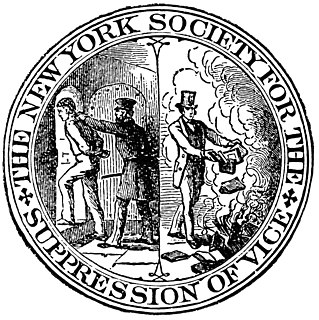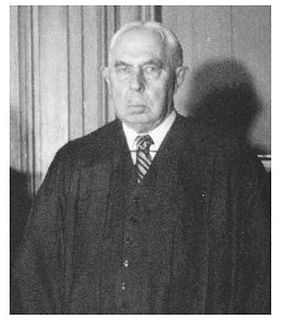Griswold v. Connecticut, 381 U.S. 479 (1965), was a landmark decision of the U.S. Supreme Court in which the Court ruled that the Constitution of the United States protects the liberty of married couples to buy and use contraceptives without government restriction. The case involved a Connecticut "Comstock law" that prohibited any person from using "any drug, medicinal article or instrument for the purpose of preventing conception". The court held that the statute was unconstitutional, and that its effect was "to deny disadvantaged citizens ... access to medical assistance and up-to-date information in respect to proper methods of birth control". By a vote of 7–2, the Supreme Court invalidated the law on the grounds that it violated the "right to marital privacy", establishing the basis for the right to privacy with respect to intimate practices. This and other cases view the right to privacy as "protected from governmental intrusion".

The Comstock Laws were a set of federal acts passed by the United States Congress under the Grant administration along with related state laws. The "parent" act was passed on March 3, 1873, as the Act for the Suppression of Trade in, and Circulation of, Obscene Literature and Articles of Immoral Use. This Act criminalized any use of the U.S. Postal Service to send any of the following items: obscenity, contraceptives, abortifacients, sex toys, personal letters with any sexual content or information, or any information regarding the above items.

Augustus Noble Hand was a United States District Judge of the United States District Court for the Southern District of New York and later was a United States Circuit Judge of the United States Court of Appeals for the Second Circuit. His most notable rulings restricted the reach of obscenity statutes in the areas of literature and contraceptives. He was the older first cousin of famed judge Learned Hand, who served on both courts with his cousin during most of Augustus Hand's tenure.

In rem jurisdiction is a legal term describing the power a court may exercise over property or a "status" against a person over whom the court does not have in personam jurisdiction. Jurisdiction in rem assumes the property or status is the primary object of the action, rather than personal liabilities not necessarily associated with the property.

Mary Coffin Ware Dennett was an American women's rights activist, pacifist, homeopathic advocate, and pioneer in the areas of birth control, sex education, and women's suffrage. She co-founded the National Birth Control League in 1915 together with Jessie Ashley and Clara Gruening Stillman. She founded the Voluntary Parenthood League, served in the National American Women's Suffrage Association, co-founded the Twilight Sleep Association, and wrote a famous pamphlet on sex education and birth control. A famous legal case against her eventually became the catalyst for overturning the Comstock laws.
Eisenstadt v. Baird, 405 U.S. 438 (1972), was a landmark decision of the US Supreme Court that established the right of unmarried people to possess contraception on the same basis as married couples.
The Hicklin test is a legal test for obscenity established by the English case Regina v Hicklin (1868). At issue was the statutory interpretation of the word "obscene" in the Obscene Publications Act 1857, which authorized the destruction of obscene books. The court held that all material tending "to deprave and corrupt those whose minds are open to such immoral influences" was obscene, regardless of its artistic or literary merit.

The womb veil was a 19th-century American form of barrier contraception consisting of an occlusive pessary, i.e. a device inserted into the vagina to block access of the sperm into the uterus. Made of rubber, it was a forerunner to the modern diaphragm and cervical cap. The name was first used by Edward Bliss Foote in 1863 for the device he designed and marketed. "Womb veil" became the most common 19th-century American term for similar devices, and continued to be used into the early 20th century. Womb veils were among a "range of contraceptive technology of questionable efficacy" available to American women of the 19th century, forms of which began to be advertised in the 1830s and 1840s. They could be bought widely through mail-order catalogues; when induced abortion was criminalized during the 1870s, reliance on birth control increased. Womb veils were touted as a discreet form of contraception, with one catalogue of erotic products from the 1860s promising that they could be "used by the female without danger of detection by the male."

The birth control movement in the United States was a social reform campaign beginning in 1914 that aimed to increase the availability of contraception in the U.S. through education and legalization. The movement began in 1914 when a group of political radicals in New York City, led by Emma Goldman, Mary Dennett, and Margaret Sanger, became concerned about the hardships that childbirth and self-induced abortions brought to low-income women. Since contraception was considered to be obscene at the time, the activists targeted the Comstock laws, which prohibited distribution of any "obscene, lewd, and/or lascivious" materials through the mail. Hoping to provoke a favorable legal decision, Sanger deliberately broke the law by distributing The Woman Rebel, a newsletter containing a discussion of contraception. In 1916, Sanger opened the first birth control clinic in the United States, but the clinic was immediately shut down by police, and Sanger was sentenced to 30 days in jail.

Birth control is a method or device used to prevent pregnancy. Birth control has been around since ancient times, but effective and safe forms of birth control have only become available in the 20th century. According to the 2015–2017 National Survey of Family Growth conducted on 72.2 million women between the ages of 15 and 49 in the United States, approximately 64.9% of the sample reported using some method of birth control.
Lambert v. Yellowley, 272 U.S. 581 (1926), was a decision by the Supreme Court of the United States that reaffirmed the National Prohibition Act's limitation on the dispensation of alcoholic medicines. The five-to-four decision, written by Justice Louis D. Brandeis, affirmed the dismissal of a suit in which New York City physician Samuel Lambert sought to prevent Edward Yellowley, the acting federal prohibition director, from enforcing the Prohibition Act so as to preclude him from prescribing alcoholic medicines. The decision affirmed the police powers of the individual states, as well as the power of the Necessary and Proper Clause of the United States Constitution, which was cited in upholding the Prohibition Act's limitations as a necessary and proper implementation of the Eighteenth Amendment to the United States Constitution.
The National Committee on Federal Legislation for Birth Control was a birth control lobbying organization set up in 1929 in Chicago by Margaret Sanger and the Illinois Birth Control League.
Family Limitation is a pamphlet written by American family planning activist, eugenicist, educator, writer, and nurse Margaret Sanger that was published in 1914. It was one of the first guides to birth control published in the United States. The 16-page pamphlet details information on, and ingredients for, various contraceptive methods and included illustrations and instructions for use. After the pamphlet was released, Sanger was forced to flee the United States to Britain to avoid prosecution under federal anti-obscenity laws, the Comstock Act, which prohibited disseminating information about contraception.






